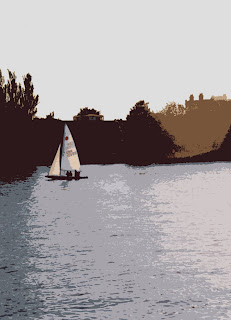Here's a quick post about syncing digital signals and digital clock sources. As I mentioned before I have my two audio interfaces linked by a coaxial
s/pdif cable. This means that I can keep a digital signal path for all my recording without the loss of quality that repeated analogue-to-digital conversion might introduce. Hence the only analogue signals are from instrument to input and from output to monitors. However, digital audio is not as straightforward as it might at first seem.
Point to note 1 -
digital audio is made by breaking down an analogue signal into discrete samples. The sample rate is the frequency at which this is done and the bit rate is essentially the number of binary digits that are used to encode the amplitude of the signal. Hence if your device is outputting a signal with a 44.1 kHz sample rate but your input is expecting a 48 kHz signal there's gonna be trouble!
Point to note 2 - when sending digital audio from one device to another their clocks must be in sync so that they both know where the music starts. This can be a bit of a problem but is usually solved by one device being the master and its clock being used to control all the other devices. In an s/pdif (and in fact the more "professional"
AES/EBU) connection, clock signals are sent along with the audio which can make it a bit temperamental for recording. However when doing things on a budget there is not a lot of choice. One often used (and expensive) solution is an external clock source that can be linked to all your other devices and transmits the so called word clock signal separately. Even then though it is still not usually as good as the internal clock for a particular device. And so in conclusion I think it's best not to think too much about it and hope that as the need for external hardware decreases so will the need for crazy digital audio connections! In the meantime this is quite an interesting
forum thread.
And if you're not sure what a binary solo is then check this out...
"The Humans Are Dead" ;)





